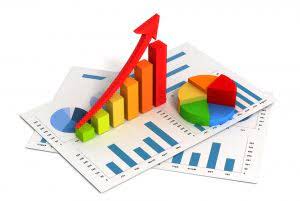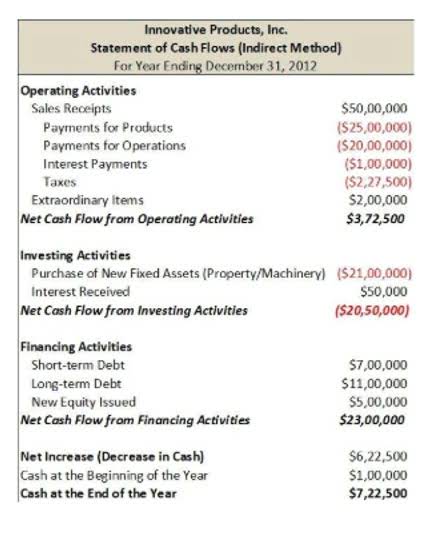
Period costs, also known as operating expenses, are expenses that are not directly tied to the production of goods or services. Instead, these costs are added over time and charged during a specific accounting period. Period costs are subtracted from the company’s revenue in the period in which they are charged rather than being recorded and allocated to the cost of goods sold (COGS) or inventory. Period costs are essentially charges that could be applied to the company’s income statement for the period in which such expenses were incurred.
Definition of Product Cost
- Period costs are also listed as an expense in the accounting period in which they occur.
- These allocation bases may include factors such as labor hours, machine hours, square footage, or production volume.
- Weighted-average costing combines current-period expenses with prior-period costs in the beginning inventory.
- Further, it is also stated that these occur during Indian premier league matches every year, and hence they are incurred periodically.
- Overhead is part of making the good or providing the service, whereas selling costs result from sales activity, and administrative costs result from running the business.
These expenses are pivotal for businesses to comprehend as they directly affect profitability and operational efficiency. Every cost incurred by a business can be classified as either a period cost or a product cost. A product cost is incurred during the manufacture of a product, while a period cost is usually incurred over a period of time, irrespective of any manufacturing activity. A product cost is initially recorded as inventory, which is stated on the balance sheet. Once the inventory is sold or otherwise disposed of, it is charged to the cost of goods sold on the income statement.

Historical Expenses

This classification relates to the matching principle of financial accounting. Therefore, before talking about how a product cost differs from a period cost, we need to look at what the matching principle says about the recognition of costs. Indirect costs, which cannot be easily traced to a specific product or service, need to be allocated using predetermined allocation bases. These bases may include factors such as labor hours, machine hours, square footage, or production volume.
Product cost: assessing the true cost of production and setting product prices
Operating expenses are the funds a business pays regularly to stay in business – rent, salaries, and advertising costs, to name a few. They play a significant role in shaping the overall profitability of a business because they directly impact how much money it gets to keep after covering all these ongoing expenses. Under different costing system, product cost is also different, as in absorption costing both fixed cost and variable cost are considered as Product Cost. On the other hand, in Marginal Costing only the variable cost is regarded as product cost.
Fixed cost is treated as a time cost and charged to the Profit and Loss Account. Indirect materials are the materials that are too hard to trace to the product to be direct materials. This includes things like glue, solder (a what are period costs low-melting alloy used to join metals together), and nails. In a nutshell, COGS is the bill for creating or buying the stuff a business sells. Imagine your favorite bakery – the cost of flour, sugar, and the baker’s time to make those croissants you’re so fond of.
- Operating expenses are the funds a business pays regularly to stay in business – rent, salaries, and advertising costs, to name a few.
- Any action you take based on the information found on cgaa.org is strictly at your discretion.
- Another name for period cost is operating expenses, which includes time costs, capacity costs, and period expenses.
- However, all the expenses are not related to product cost except for the cost of goods sold.
- In addition, knowing and managing capacity costs provides a key advantage for companies looking to improve their financial decision-making processes.
- These costs are not part of the manufacturing process and are, therefore, treated as expense for the period in which they arise.
Why is the distinction between product costs and period costs important?

Period costs, unlike product costs, are not directly tied to the production process and are expensed in the period in which they occur. These costs are more administrative in nature and include items such as sales commissions, advertising, rent, office supplies, and utilities. The timing of these costs can significantly affect a company’s financial performance and reporting. In the pursuit of business excellence, the management of period costs stands as a pivotal factor in shaping the financial landscape of an organization. Unlike variable costs, which fluctuate with production volume, period costs are incurred regardless of the business activity level. These fixed costs, such as rent, administrative salaries, and utility expenses, can Accounting Security significantly impact the bottom line and necessitate astute management strategies.
For example, iron ore is a direct material to a steel company because the iron ore is clearly traceable to the finished product, steel. Choosing the appropriate method of allocating Period Costs depends on factors such as the nature of the business, the complexity of operations, and the availability of data. Recognizing the importance of Period Costs in financial analysis allows businesses to make informed decisions, optimize performance, and achieve long-term success and sustainability. As a general rule, costs are recognized as expenses on the income statement in the period that the benefit was derived from the cost. So if you pay for two years of liability insurance, it wouldn’t be good to claim all of that expense in the period the bill was paid. Since the expense covers a two year period, it should be recognized over both years.

On the contrary, Period Cost is just opposite to product cost, as they are not Accounting Periods and Methods related to production, they cannot be apportioned to the product, as it is charged to the period in which they arise. Understanding the differences between historical (past), current (present), and pre-determined (future) expenses is important for successful financial planning. Historical expenses are unrelated to current decision-making, while pre-determined expenses involve estimates for future periods, impacting budget preparation and decision-making. Understanding these differences is important for performing a detailed financial analysis. Make a note of how much money you spend on period costs and expense them during the period in which the costs are incurred.
- Properly classifying costs is key for accurate financial statements, and understanding the different roles of Period and Product Costs is crucial for financial reporting.
- As a general rule, costs are recognized as expenses on the income statement in the period that the benefit was derived from the cost.
- A period cost can be termed as any cost that cannot be categorized into prepaid expenses, fixed assets, or inventory.
- In the realm of accounting and finance, period costs play a pivotal role in shaping the strategic decisions of a business.
- As per the vignette, the travel and entertainment expenses boost employee morale and support, which improves work performance and increases product quality.
- In the world of managerial accounting, understanding period costs is crucial for effective management and decision-making.
Understanding the characteristics, importance, and classification of period costs is crucial for effective cost control, budgeting, and performance evaluation. By implementing best practices for managing period costs, businesses can optimize their expenses, improve their bottom line, and gain a competitive edge in the market. Understanding Period Costs is crucial for any business looking to navigate the complex landscape of financial management. By grasping the distinction between Period Costs and Product Costs, businesses can accurately assess their expenses and make informed decisions to improve profitability. From administrative and selling expenses to marketing costs and depreciation, every Period Cost plays a role in shaping a company’s financial health.